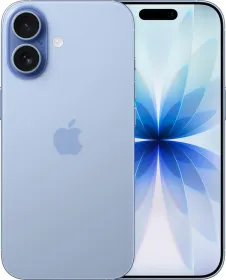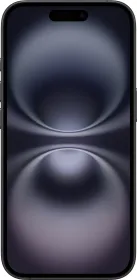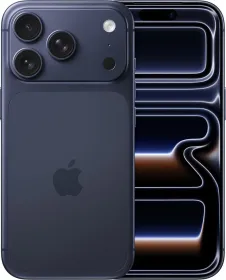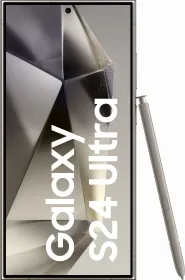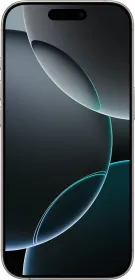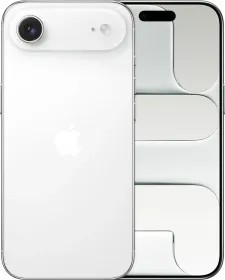The iPhone 17 is days away, and the ritual is familiar. Leaks, renders, and AI speculation dominate the feeds, while Android diehards roll their eyes as they accuse Apple of a lack of innovation. But history tells a different story. Apple makes a move, the internet mocks it, Android brands roast it in ads, and then, a year later, quietly copy it.
It’s not that Apple invents every feature. Often, it doesn’t. What Apple does is something harder: it takes half-baked ideas, perfects them, and makes them feel inevitable. That Apple’s distinctive presentation forces the entire smartphone industry to recalibrate.
Here are ten times Apple’s iPhone set the agenda and Android eventually fell in line.
1. The Touchscreen That Killed the Keyboard (2007)

BlackBerry thought people would never give up their keyboards. Palm thought styluses were essential. Then Steve Jobs pulled out the first iPhone and casually declared, “Who wants a stylus?”
Soon after, stylus-based Symbian & Windows Mobile devices disappeared from the market. Apple’s capacitive multi-touch display changed that overnight. Pinch-to-zoom, swipe-to-scroll, tap-to-type: suddenly, buttons looked archaic. Within two years, Android flagships went all-screen. Within two years, almost every flagship smartphone abandoned physical keyboards. The era of all-screen devices began with the iPhone.
2. The App Store That Created an Economy (2008)

Before the App Store, installing apps was clunky and niche. Apple’s App Store turned it into an economy. Suddenly, your phone wasn’t just for calls and texts it was a pocket computer with limitless potential. Uber, Instagram, WhatsApp, TikTok, they all exist because the App Store model worked.
It was such a success that Google, Microsoft, and even BlackBerry had to launch their own app marketplaces. Google launched its Android Market (now Play Store), but Apple had already made “there’s an app for that” a cultural catchphrase.
ALSO READ: Exclusive first look at the Galaxy S26 Ultra and S26 Pro Renders Suggests Samsung is playing it safe
3. Pixel-per-inch Obsession With Sharpness (2010)

The iPhone 4 debuted with a Retina Display, marking the first time a brand publicly discussed pixels per inch (ppi). Apple marketed it as “so sharp your eyes can’t see pixels.” It reframed expectations. Apple focused on screen sharpness that made individual pixels virtually invisible, making text and photos appear as high-quality prints. This was a brilliant marketing move and a significant technical achievement.
Android brands from Samsung to LG, and OnePlus to vivo, all scrambled to outdo Apple with higher resolutions and OLED panels. Suddenly, display sharpness was a battlefield, not a footnote. Every flagship spec sheet since has carried Apple’s fingerprints.
4. The Camera That Killed the Point-and-Shoot (2011–2016)

Apple didn’t invent the camera phone, but it turned the iPhone into the camera you actually wanted to use.
With the iPhone 4S in 2011, the 8MP sensor wasn’t just better on paper; it was good enough that people stopped carrying digital cameras. Suddenly, vacations, weddings, and even journalists started being captured on iPhones.
Then came the iPhone 6s (2015) with 4K video and Live Photos, and the iPhone 7 Plus (2016) with Portrait Mode. These weren’t just features, they changed behavior. Instagram feeds got sharper, YouTube vlogs looked professional, and “Shot on iPhone” became both marketing and reality.
Android makers scrambled to catch up. Samsung pushed big sensors, Huawei bet on Leica partnerships, and Google leaned on computational photography. But the reason smartphone cameras became the reason to upgrade, not battery, not processors, was because Apple made imaging the heart of the iPhone story.
ALSO READ: OnePlus 15 Roundup: Expected Specs, Launch Date, and Pricing
5. Touch ID and Face ID Made Biometrics Normal (2013 & 2017)

Before the iPhone 5s, unlocking your phone meant PINs or patterns. Touch ID turned fingerprints into the default. It was quick, seamless, and felt futuristic. Android followed to match it, sometimes with clunky rear sensors, sometimes under-display.

Then came Face ID with the iPhone X. Risky at launch, mocked as unnecessary, it proved reliable enough to ditch the home button entirely. Today, face unlock is also part of Android phones’ feature list.
6. Kill the Headphone Jack (2016)

When Apple removed the 3.5mm headphone jack, the backlash was immediate. Samsung ran ads mocking it. Google piled on. Critics called it anti-consumer.
The decision to remove the headphone jack accelerated the shift toward wireless audio. AirPods quickly became a cultural phenomenon, making wireless earbuds the new standard.
Within a few years, even the brands that had previously mocked Apple began to eliminate the headphone jack from their devices. Apple not only redefined an industry standard but also introduced its own line of accessories, prompting competitors like Galaxy Buds and Pixel Buds to follow suit.
ALSO READ: vivo X300 Series Camera Specs Confirmed Officially
7. The Notch & Gesture Era (2017)
The iPhone X’s notch was a punchline in 2017. Memes ridiculed it. Android brands promised they’d never copy it. Within months, Huawei, OnePlus, and even Google had their own versions.
But the notch was only part of the story. Apple killed the home button and introduced gesture navigation. Swipe up to go home, swipe sideways for multitasking motions so natural they now define both iOS and Android. Apple didn’t just remove a button; it rewrote how we physically interact with our phones.
8. Ditching the In-Box Charger (2020)

When Apple stopped shipping chargers with the iPhone 12, the internet lost it. Memes, outrage, accusations of corporate greed, and then the inevitable shift. Samsung, Google, and Xiaomi all followed.
Apple framed it as sustainability. Critics saw profit. The truth: both are correct. But whether you agree or not, the decision normalized a new baseline for the industry. The accessory in the box became optional, not expected.
9. Privacy as a Product (2021–Present)

Apple’s most underrated disruption wasn’t a port or a screen, it was privacy. With iOS 14, Apple introduced App Tracking Transparency, forcing apps to ask before tracking users. Facebook (now Meta) said it would cost them billions. Google scrambled to invent the Privacy Sandbox for Android.
Apple made privacy a consumer selling point. Billboards declaring “What happens on your iPhone stays on your iPhone” turned a technical policy into brand identity. In a world built on surveillance capitalism, Apple carved out differentiation by saying no. Android, funded by ads, couldn’t ignore it.
10. The Ecosystem(Ongoing)

Perhaps Apple’s greatest trick wasn’t any single feature, but the ecosystem. It’s a seamless ecosystem where the iPhone, Mac, iPad, and Apple Watch work together flawlessly. Features like Handoff, AirDrop, and Universal Clipboard create a sticky and convenient user experience. Android manufacturers, led by Samsung and Google, are now heavily investing in building out their own ecosystems, aiming to replicate that same level of deep integration between their phones, tablets, watches, and laptops.
Samsung and Google are scrambling to replicate it with Galaxy Buds, Pixel Watches, and cloud services. Xiaomi and Huawei are trying, too. But Apple’s “walled garden” remains the deepest moat in tech.
The Pattern That Defines the Industry
The iPhone didn’t invent every idea it popularized. What it did was take ideas that were half-formed, polish them into mainstream inevitabilities, and make the world follow. That’s why the iPhone 17 matters. Whatever Apple announces tomorrow – AI features, new silicon, or another controversial hardware decision. It will shape Android’s roadmaps for the next two.
You can follow Smartprix on Twitter, Facebook, Instagram, and Google News. Visit smartprix.com for the latest tech and auto news, reviews, and guides.
















